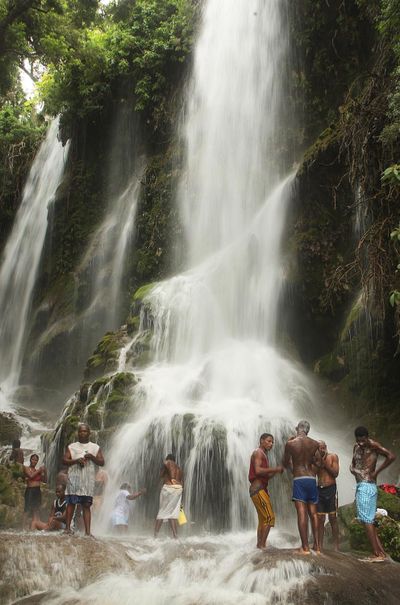Haiti promotes its sights

The billboard on Interstate 95, with its azure sea and sugar-colored sand, could have been an ad for any of the myriad tropical destinations hoping to woo travelers abroad.
But the tagline might be surprising to some: Haiti, Live the Experience.
The billboard, which was erected in August by the Haitian government, is the latest salvo in what the country’s tourism officials and hospitality industry say is a battle to rebrand a country known more for political unrest and natural disasters than its historical landmarks and natural beauty.
The I-95 billboard has since been removed, but others will soon appear not only in Haitian enclaves, but places like Miami’s South Beach – a nod to the savvy and well-heeled travelers Haiti hopes to someday attract.
“We can’t keep seeing the negative; we have to start somewhere,” said Guy Francois, Haiti’s vice consul to Miami. “We just need to bring awareness to the country. We need to get the pride back.”
The focus on attracting travelers comes as Haiti’s Ministry of Tourism embarks on an ambitious worldwide pitch, traveling to tourism fairs in Latin America and Europe and whizzing a global tourism czar along on a helicopter tour.
But some industry experts, as well as some Haitians in the diaspora, say pitching Haiti as a generically tropical destination ignores more marketable traits unique to Haiti.
“If they sell beaches, sun and palm trees, they’re going to lose,” said Bruce Turkel, a Miami-based marketing expert who has worked as a brand consultant for Puerto Rico. “There are plenty of audiences that will go to Haiti happily, like adventure travelers and cultural tourists, whether they’re interested in music or art. That’s what Haiti needs to concentrate on.”
Haiti must compete with its next-door-neighbor, the Dominican Republic, which has perfected the all-inclusive resort package complete with beaches and day excursions. In 2011, Dominican Republic travel and tourism supported 170,000 jobs, according to the World Travel and Tourism Council.
By comparison, the tourism trade in Haiti provides about 10,000 jobs, according to Haiti’s Ministry of Tourism.
Some entrepreneurs are pinning their hopes on adventure travel, a potentially lucrative market that taps travelers who may be more forgiving of the country’s famously rough roads and dicey infrastructure.
Philip Kiracofe, founder of marketing agency Travelcology, said Haiti is the ideal location for adventure tourism with its endless mountains and remote rural routes.
Kiracofe launched Mountain Bike Ayiti Project, to promote sustainable adventure tourism. The group plans to host its first race in January from Port-au-Prince to Jacmel.
“Slowly, the word is spreading out: ‘Hey, it’s not as bad as you think,’ ” Kiracofe said. “Haiti is pristine in many ways.”
As Haiti builds on its infrastructure to better accommodate leisure tourists, experts say it is the Haitian community abroad that will be most patient in the nascent stage of the tourism movement. The country suffers from regular power outages, shoddy roads and unpredictable politics.
“Of course the political situation is always a mess, but the people need to see that the country is not only what they see on the news after a disaster,” said Nancy Roc, a Haitian journalist based in Canada, who recently released a French-language travel e-book highlighting Haiti’s must-see locales and culture.
“Haiti is not Port-au-Prince,” she said of the nation’s capital, which was hard hit by the 2010 earthquake.